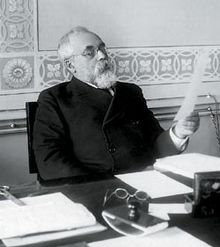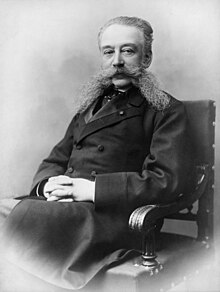
The Russian Revolution of 1905, also known as the First Russian Revolution, began on 22 January 1905. A wave of mass political and social unrest then began to spread across the vast areas of the Russian Empire. The unrest was directed primarily against the Tsar, the nobility, and the ruling class. It included worker strikes, peasant unrest, and military mutinies. In response to the public pressure, Tsar Nicholas II was forced to go back on his earlier authoritarian stance and enact some reform. This took the form of establishing the State Duma, the multi-party system, and the Russian Constitution of 1906. Despite popular participation in the Duma, the parliament was unable to issue laws of its own, and frequently came into conflict with Nicholas. The Duma's power was limited and Nicholas continued to hold the ruling authority. Furthermore, he could dissolve the Duma, which he did three times in order to get rid of the opposition.
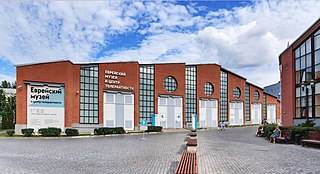
The history of the Jews in Russia and areas historically connected with it goes back at least 1,500 years. Jews in Russia have historically constituted a large religious and ethnic diaspora; the Russian Empire at one time hosted the largest population of Jews in the world. Within these territories, the primarily Ashkenazi Jewish communities of many different areas flourished and developed many of modern Judaism's most distinctive theological and cultural traditions, while also facing periods of antisemitic discriminatory policies and persecution, including violent pogroms. Some have described a "renaissance" in the Jewish community inside Russia since the beginning of the 21st century; however, the Russian Jewish population has experienced precipitous decline since the dissolution of the USSR which continues to this day, although it is still among the largest in Europe.
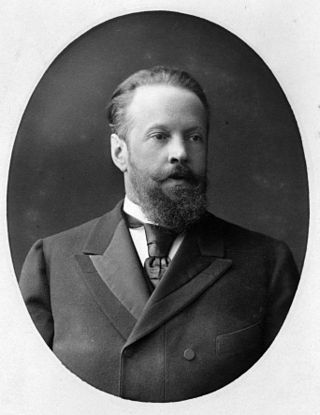
Count Sergei Yulyevich Witte, also known as Sergius Witte, was a Russian statesman who served as the first prime minister of the Russian Empire, replacing the emperor as head of government. Neither liberal nor conservative, he attracted foreign capital to boost Russia's industrialization. Witte's strategy was to avoid the danger of wars.

Pyotr Arkadyevich Stolypin was a Russian statesman who served as the third prime minister and the interior minister of the Russian Empire from 1906 until his assassination in 1911. Known as the greatest reformer of Russian society and economy, his reforms caused unprecedented growth of the Russian state, which was halted by his assassination.

Ivan Logginovich Goremykin was a Russian politician who served as the prime minister of the Russian Empire in 1906 and again from 1914 to 1916, during World War I. He was the last person to have the civil rank of Active Privy Councillor, 1st class. During his time in government, Goremykin pursued conservative policies.

Pavel Nikolayevich Milyukov was a Russian historian and liberal politician. Milyukov was the founder, leader, and the most prominent member of the Constitutional Democratic party. He changed his view on the monarchy between 1905 and 1917. In the Russian Provisional Government, he served as Foreign Minister, working to prevent Russia's exit from the First World War.
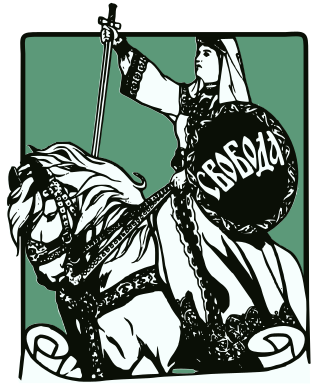
The Constitutional Democratic Party, also called Constitutional Democrats and formally the Party of People's Freedom, was a political party in the Russian Empire that promoted Western constitutional monarchy—among other policies—and attracted a base ranging from moderate conservatives to mild socialists. Party members were called Kadets from the abbreviation K-D of the party name. Konstantin Kavelin's and Boris Chicherin's writings formed the theoretical basis of the party's platform. Historian Pavel Miliukov was the party's leader throughout its existence.
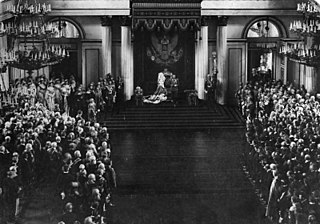
The Russian Constitution of 1906 refers to a major revision of the 1832 Fundamental Laws of the Russian Empire, which transformed the formerly absolutist state into one in which the emperor agreed for the first time to share his autocratic power with a parliament. It was enacted on 6 May [O.S. 23 April] 1906, on the eve of the opening of the first State Duma. This first-ever Russian Constitution was a revision of the earlier Fundamental Laws, which had been published as the Code of Laws of the Russian Empire in 1832. It was granted during the Russian Revolution of 1905, in a last-ditch effort by the imperial government to preserve its own existence and keep the empire from disintegration.

Under Tsar Nicholas II, the Russian Empire slowly industrialized while repressing opposition from the center and the far-left. During the 1890s Russia's industrial development led to a large increase in the size of the urban middle class and of the working class, which gave rise to a more dynamic political atmosphere. Because the state and foreigners owned much of Russia's industry, the Russian working class was comparatively stronger and the Russian bourgeoisie comparatively weaker than in the West.

The Black Hundred, also known as the black-hundredists, were a reactionary, monarchist and ultra-nationalist movement in Russia in the early 20th century. It was a staunch supporter of the House of Romanov and opposed any retreat from the autocracy of the reigning monarch. The name arose from the medieval concept of "black", or common (non-noble) people, organized into militias.
The Russian Council of Ministers is an executive governmental council that brings together the principal officers of the Executive Branch of the Russian government. This includes the chairman of the government and ministers of federal government departments.
The Trudoviks were a democratic socialist political party of Russia in the early 20th century.

Sergey Andreyevich Muromtsev was a Russian lawyer and politician, and chairman of the First Imperial Duma in 1906.

Vasily Alekseyevich Maklakov was a Russian student activist, a trial lawyer and liberal parliamentary deputy, an orator, and one of the leaders of the Constitutional Democratic Party, notable for his advocacy of a constitutional Russian state. He served as deputy in the (radical) Second, and conservative Third and Fourth State Duma. According to Stephen F. Williams Maklakov is "an inviting lens to which to view at the last years of Tsarism".

The State Duma, also known as the Imperial Duma, was the lower house of the legislature in the Russian Empire, while the upper house was the State Council. It held its meetings in the Tauride Palace in Saint Petersburg. It convened four times between 27 April 1906 and the collapse of the empire in February 1917. The first and the second dumas were more democratic and represented a greater number of national types than their successors. The third duma was dominated by gentry, landowners, and businessmen. The fourth duma held five sessions; it existed until 2 March 1917, and was formally dissolved on 6 October 1917.

The Progressive Bloc was an alliance of political forces in the Russian Empire and occupied 236 of the 442 seats in the Imperial Duma.

The Vyborg Manifesto ; also called the Vyborg Appeal) was a proclamation signed by several Russian politicians, primarily Kadets and Trudoviks) of the dissolved First Duma on 22 July [O.S. 9 July] 1906.
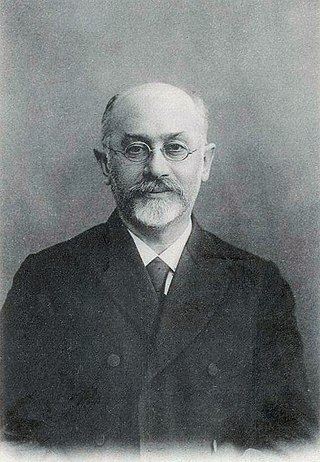
Mikhail Yakovlevich Herzenstein was a Russian-Jewish scientist and politician who converted to Christianity, elected for the Constitutional Democratic Party to the First State Duma of the Russian Empire, representing the city of Moscow. He was assassinated before the end of his parliamentary mandate by the Black Hundreds, a reactionary antisemitic terrorist group at his summer home in Terijoki in the Grand Duchy of Finland.
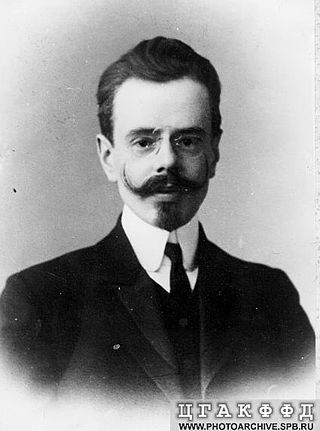
Fyodor Fyodorovich Kokoshkin was a Russian lawyer and politician, author of seminal works on jurisprudence, the First Russian State Duma deputy, and a founding member of the Russian Constitutional Democratic Party and the Controller general of the Russian Provisional Government. The playwright Fyodor Kokoshkin was his grandfather.

An index of articles related to the Russian Revolution and the Russian Civil War period (1905–1922). It covers articles on topics, events, and persons related to the revolutionary era, from the 1905 Russian Revolution until the end of the Russian Civil War. The See also section includes other lists related to Revolutionary Russia and the Soviet Union, including an index of articles about the Soviet Union (1922–1991) which is the next article in this series, and Bibliography of the Russian Revolution and Civil War.

